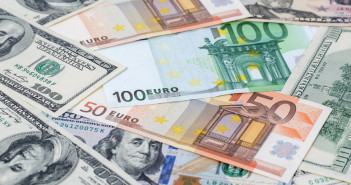- The EUR/USD attempted to recover on some ease in the Turkish crisis and upbeat Greman GDP.
- The crisis is far from resolved and the US Dollar is on the march.
- The technical picture remains bearish for the pair which is still out of the oversold territory.
The EUR/USD was trading at around 1.1400, paring earlier gains. Turkey remains in the limelight. The government in Ankara is set to introduce an economic plan to stabilize the economy, and President Recep Tayyip Erdoğan pledged his support to open markets.
In addition, the central bank introduced some measures such as liquidity provisions. These have helped soothe investors’ worst fears and sent the Turkish Lira up 5% against the US Dollar at some point. The euro and stock markets enjoyed this improved atmosphere.
However, markets want to see an interest rate hike which Erdoğan vehemently opposes. The recent recovery may turn into a temporary one.
Euro-zone data
German data was genuinely upbeat. The economy grew at a robust pace of 0.5% QoQ in Q2 2018, better than had been expected.
The euro-zone grew by 0.4% QoQ in Q2 according to the latest data, up from 0.3% originally reported. The German data pushed it higher. Year over year, the euro-zone growth is now 2.2% against 2.2% in the initial read.
Germany’s ZEW Economic Index also surprised to the upside with -13.7 in August. The negative figure still reflects pessimism but it is a significant bounce from -24.7 seen in July.
On the other hand, euro-zone Industrial Production dropped by 0.7% in June, worse than had been expected.
The US Dollar remains robust. Without any earth-shattering news, the greenback continues enjoying a potent mix of a booming economy, a hawkish central bank, and trade tensions, and the Turkish crisis, which benefits the dollar against almost all currencies except the ultimate safe-haven, the Japanese yen.
All in all, the strength of the US Dollar outweighs upbeat euro-zone data, and the ease in the Turkish crisis is not good enough.
EUR/USD Technical Analysis
The four-hour chart shows Momentum remains steadfast to the downside. The Relative Strength Index (RSI) is just above 30 at the time of writing, still not in the oversold territory.
The 13-month low of 1.1365 seen on Monday is a critical support line. Further down, we are back to levels that were last seen in 2017. 1.1300 was a range separator last summer and is also a round number. 1.1225 capped the pair around the same time.
On the topside, the fresh recovery high of 1.1430 is an immediate line of resistance. The previous 2018 trough at 1.1508 is next up, followed closely by 1.1530 which was a swing low just before the recent collapse.
More: Turkish crisis: It’s the Fed and trade, Turkey was only the weakest link, and more may come




